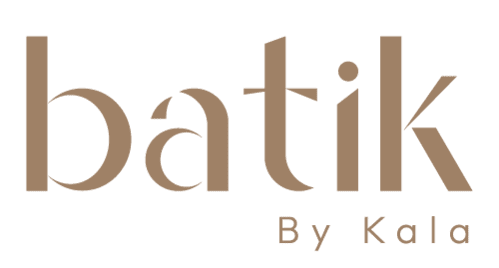Have you ever wondered how an ancient art form stays relevant in today’s fast-paced world? The answer lies in the delicate balance between heritage and evolution. Batik, recognized by UNESCO as an intangible cultural treasure, remains a cornerstone of Malaysia’s identity.
Events like Batik Week 2021 highlight the nation’s push to blend tradition with modern techniques. Government initiatives and organizations like Kraftangan Malaysia support artisans, ensuring skills pass to younger generations.
Today’s creators weave contemporary designs into traditional batik, making it appealing globally. This fusion keeps the craft alive while honoring its roots. Discover how this vibrant art form continues to evolve.
The Rise of Innovation in Batik Malaysia
Modern artisans are reshaping batik with fresh techniques while preserving its cultural essence. From safer methods to tech-driven production, the craft thrives by adapting to contemporary demands.
Modernizing Traditional Craftsmanship
Artisans like Nur Nabihah Zakaria swapped hot wax for clay resist, creating 10+ pieces daily. This method is safer and boosts output without losing traditional batik’s intricate beauty.
Amy Blair of Batik Boutique proves affordability is possible. Her streamlined batik chop process cuts costs while maintaining quality, appealing to younger generations.
Key Drivers of Change in the Industry
MIDA’s push for automation under IR4.0 attracted RM3,174 million in textile investments. Virtual factory tours during Batik Week showcased these advancements.
Young designers lead with abstract and floral motifs, drawing global buyers. Sustainability efforts, like ESG principles, align with Malaysia’s Twelfth Plan, ensuring the industry grows responsibly.
Government and Industry Efforts to Revitalize Batik
Government and private sectors are joining forces to preserve Malaysia’s batik heritage. Through training, funding, and eco-friendly policies, these efforts ensure the craft thrives in a modern economy.
MIDA's Role in Promoting Green Practices
MIDA’s 2021 Batik Week trained 500+ participants in ESG-compliant methods. Dato’ Lokman Hakim, MITI Secretary General, stressed aligning batik with global sustainability standards. Investments of RM3,174 million boosted textile automation, creating 7,538 skilled jobs.
Training Programs for Artisans and SMEs
PPDK Lenggong empowers special-needs artisans through clay batik, a safer alternative to hot wax. Kraftangan Malaysia’s incubator programs offer seed funding and patents, helping SMEs like Nur Nabihah’s studio scale production.
Chairman Nori Abdullah of PENYAYANG highlights green technology’s role in diversifying product lines. These initiatives blend tradition with progress, securing batik’s future as a living art.
Cutting-Edge Techniques Transforming Batik Production
New methods are reshaping how artisans create batik, blending tradition with modern efficiency. From safer materials to automated tools, these advancements ensure the art thrives in today’s competitive market.
Clay Resist: A Safer Alternative to Hot Wax
Kraftangan Malaysia’s patented clay resist—a mix of clay, water, and binder—replaces hazardous wax. Trainees at PPDK Lenggong, including those with disabilities, now produce 4-meter fabrics daily. This process is safer and 5x faster than traditional methods.
Nur Nabihah’s workshop sells 200+ pieces per exhibition using clay-resist designs. Kraftangan earned a silver medal at the 2024 National Intellectual Property Awards for this sustainable breakthrough.
Automation and IR4.0 in Batik Manufacturing
MIDA promotes automated dyeing machines, cutting costs by 30%. AI-driven pattern design and looms minimize waste, aligning with global industry standards. German tourists visit PPDK Lenggong to witness these innovations firsthand.
Exports to Turkey and India highlight growing demand. With IR4.0, Malaysia’s batik sector proves tradition and technology can coexist beautifully.
Conclusion
Every purchase of batik supports artisans and preserves culture. Clay resist and automation future-proof this art, while partnerships with groups like PPDK Lenggong empower communities.
Batik Boutique’s B Corp certification proves heritage and sustainability can merge. As Amy Blair says, “Batik is a conversation between history and innovation.”
Choose authentic pieces to back 7,500+ livelihoods. Explore MIDA-supported collections or ethical brands—each piece celebrates cultural art and eco-fashion.
FAQ
How is Malaysian batik different from traditional styles?
Malaysian designs often feature bold floral patterns and vibrant colors, while traditional Javanese batik leans toward intricate motifs and deeper tones. Local artisans blend heritage with contemporary influences.
What eco-friendly methods are used in modern production?
Many workshops now use clay instead of hot wax, reducing chemical waste. Some brands like Karyaneka also adopt water-based dyes and energy-efficient digital printing.
Does the government support batik artisans?
Yes. Agencies like MIDA offer grants for sustainable practices, while MARDI provides training in new techniques. Annual events like KL Batik Week boost market exposure.
Can technology preserve handmade craftsmanship?
Automated block printing and AI-assisted design tools speed up production, but master artisans still hand-paint premium pieces. The blend maintains quality while meeting demand.
Where can I see innovative batik designs?
Galleries in Kuala Lumpur (e.g., Galeri Prima) showcase experimental works. Fashion labels like Alia Bastamam also integrate batik into modern apparel.
